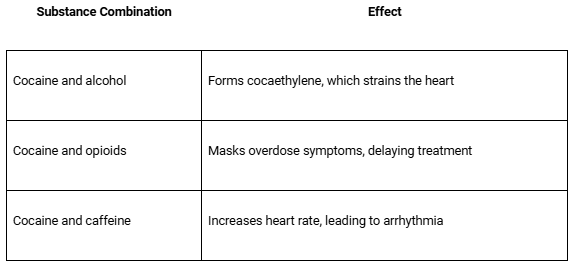Table of Contents
Cocaine overdose is a serious and potentially fatal medical emergency that has seen a rise in recent years. This article explores the symptoms, risk factors, and prevention strategies for cocaine overdose, as well as the importance of seeking professional help.
What Is a Cocaine Overdose?
A cocaine overdose occurs when the drug overwhelms the [cardiovascular system](http:// Cardiovascular System Overview – NCBI ), leading to severe complications such as heart attacks, strokes, or seizures.
Overdose can result from a single large dose or from taking multiple smaller doses in quick succession. Cocaine affects the brain by increasing dopamine levels, which can lead to euphoria but also places immense stress on the heart and nervous system.
Cocaine Overdose Symptoms
Recognizing the symptoms of a cocaine overdose is crucial for timely intervention:
- Rapid heart rate and high blood pressure
- Seizures and hallucinations
- Chest pain, heart attack, or stroke
- Extreme agitation or confusion
- Shortness of breath and irregular heartbeat
First Aid Tips: If you suspect someone is overdosing on cocaine, call 911 immediately. Administer CPR if breathing stops until emergency services arrive. Importantly, seeking medical help does not always involve police, encouraging more people to act swiftly.How Much Cocaine Can Cause an Overdose?
There is no universally safe dose of cocaine, as individual tolerance varies widely.
Factors increasing overdose risk include:- Pre-existing heart conditions or high blood pressure
- Mixing cocaine with other drugs (e.g., alcohol, opioids)
- Body weight, metabolism, and tolerance levels

While typical doses range from 30 to 70 mg, users often increase their intake over time. Doses above 1 g are common among those with high tolerance, but even 30 mg can be lethal for some individuals with hypersensitivity. The cumulative effect on the cardiovascular system is often more dangerous than toxicity alone.
The Role of Poly-Substance Abuse in Overdose Risk
Combining cocaine with other substances significantly increases health risks:
If you or someone you know uses multiple substances regularly, reaching out for professional help is crucial.
Harm Reduction Tips for Cocaine Users
While abstinence is the safest choice, harm reduction strategies can mitigate risks:
- Use with others so someone can call for help in an emergency.
- Space out doses to reduce cardiovascular strain.
- Test for fentanyl contamination if possible.
- Stay hydrated and eat regularly to avoid dehydration-related issues.
Remember that harm reduction does not eliminate risk but can save lives.

When to Seek Professional Help for Cocaine Use
Cocaine addiction is treatable, and recovery can improve long-term health outcomes. Signs that professional help is needed include:
- Using more cocaine than intended or losing control over use
- Experiencing withdrawal symptoms or cravings
- Engaging in risky behavior like mixing substances
If you or someone you love struggles with cocaine use, contact Asana Recovery at (949) 763-3440 for compassionate assistance.
Asana Recovery’s Cocaine Treatment Programs
Asana Recovery offers comprehensive treatment services:
- Medical Detox: Safely manage withdrawal symptoms.
- Inpatient/Residential Care: Intensive support in a structured environment.
- Outpatient Programs: Flexible care for those balancing other responsibilities.
- Therapy Options: Includes Cognitive Behavioral Therapy (CBT) and group counseling.
Conclusion
Cocaine overdose is a critical medical emergency requiring immediate attention. Understanding its symptoms and risks can save lives. If you or your loved ones are struggling with cocaine use, seek help before an emergency arises. Contact Asana Recovery for more information or to begin treatment today.
Meet the Book That’s
Changing Lives
This book has helped so many men and women; and we want to give it you for FREE. Get signed up today and discover how to unlock the grip of addiction and get back to living your best life.
In this book, you’ll discover…
— The Most Common Misconceptions About Addiction and Rehab
— Why Rock Bottom is a Myth and What You Can Do About It
–The Steps to Healing From Trauma, Both Mentally and Emotionally
–And much more!
